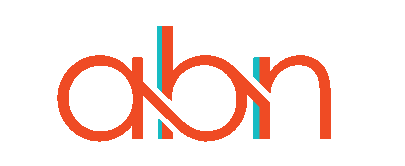Turning Temporary Work Into Permanent Opportunities
Temporary work can serve as an important bridge to a permanent position. Though often viewed as short-term solutions, these roles provide a valuable chance to demonstrate your skills and fit within a company. In this post, we’ll look at why companies hire temporary employees, and then talk about how to convert a temporary job into a lasting opportunity.
Why Companies Hire Temp Employees
Organizations increasingly turn to temporary employees for several key reasons. First, temporary workers provide flexibility, allowing companies to quickly adapt to fluctuating workloads without the long-term commitment of a full-time hire. This can be particularly valuable during peak seasons, for project-based work, or when covering employee absences.
Additionally, temp positions allow businesses to assess a candidate’s skills and cultural fit before making a permanent offer, which improves their chances of finding the right candidate. Think of it as a trial period for both the employee and employer.
By utilizing temporary staff, companies can maintain productivity while strategically managing their workforce needs. So, the employment outlook for temporary positions remains strong, as businesses increasingly rely on flexible staffing solutions to adapt to changing market conditions.
Effective Strategies for Transforming Temporary Roles into Permanent Positions
To successfully transition from a temporary role to a permanent position, it’s essential to adopt a proactive approach. Here are a few key strategies that can help you stand out and secure a lasting opportunity.
Deliver Outstanding Performance
One of the most critical factors in securing a permanent position is your performance during your temporary stint. Demonstrating a strong work ethic and reliability can set you apart from other candidates. Here are a few tips to ensure you shine in your role:
- Be Proactive: Take initiative and look for ways to contribute beyond your assigned tasks. Whether it’s volunteering for additional projects or suggesting improvements, showing that you’re engaged and willing to help can leave a lasting impression.
- Stay Organized: Juggling multiple tasks can be challenging, especially in a new environment. Keep a to-do list, prioritize tasks, and manage your time effectively to demonstrate your ability to handle responsibility.
- Seek Feedback: Regularly ask for feedback from your supervisor and colleagues. This shows that you are committed to personal growth and are willing to make adjustments based on constructive criticism.
Build Relationships
In any workplace, building strong relationships is key to success. For temp workers, this is especially important, as networking can open doors to permanent opportunities. Here are some ways to cultivate meaningful connections:
- Engage with Colleagues: Make an effort to connect with your coworkers. Join team lunches, participate in discussions, and show genuine interest in their work and experiences. Building rapport can help create a supportive environment and may lead to advocacy from colleagues when a permanent position becomes available.
- Identify Mentors: Look for individuals within the organization who can provide guidance and support. Having a mentor can not only enhance your professional development but also increase your visibility within the company.
- Network Across Departments: Don’t limit your connections to your immediate team. Take the time to meet people in other departments. A broader network can provide insights into other roles and may help you learn about openings before they’re officially posted.
Communicate Ambitions
Being proactive about your career goals is essential. Communicating your interest in a permanent position can make a significant difference in how you’re perceived as a temp worker.
- Express Your Interest: During your time as a temp, don’t hesitate to let your supervisor know that you’re interested in a permanent role. A simple conversation about your aspirations can demonstrate your commitment and enthusiasm.
- Be Open to Feedback: When you express your ambitions, also be open to discussing areas for improvement. This shows that you’re not only interested in the position but also willing to invest in your own growth to meet the company’s needs.
- Stay Professional: While it’s important to communicate your interests, always maintain professionalism. Avoid coming across as overly eager or desperate; instead, frame your aspirations within the context of your contributions and alignment with the organization’s goals.
- Act the Part: When you accept a temporary position, it’s essential to behave like it’s a permanent job. Doing excellent work, being conscientious, and having a cooperative attitude create a positive impression.
Concluding Thoughts
While temporary roles are often seen as short-term solutions, they can be a stepping stone to a permanent position if approached strategically. By delivering outstanding performance, building strong relationships, and clearly communicating your ambitions, you can turn a temporary job into a lasting opportunity.







